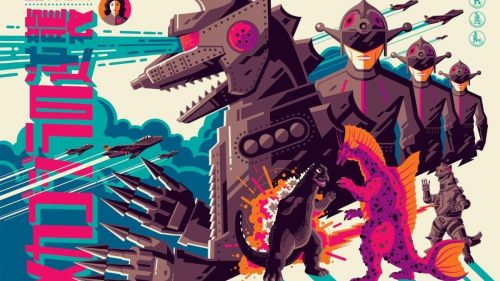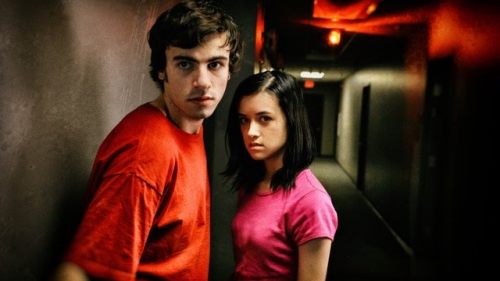SXSW 2019: Science On Screen
Any sufficiently advanced technology is indistinguishable from magic.” - Arthur C. Clarke, writer, inventor, futurist
“Art is I; Science is we.” - Claude Bernard, French physiologist
SXSW Film encompasses an array of genres that showcase diverse stories from independent first-time directors to big-budget blockbusters. While documentaries shine a light on the latest science and technology, narrative features and headliners blend fact with fiction to tell some of the most unsettling stories that can resonate with audiences through a scientific core. For example, Jordan Peele’s Us explores evil doppelgängers with a story that inadvertently alludes the functionality and plausibility of mirror neurons, cloning, and quantum theory. Robert Rodriguez’s horror film Red 11 provides both a factual and fantastical depiction of the director’s time as a human lab rat for a pharmaceutical trial in his early twenties. In director Rick Alverson’s The Mountain, Jeff Goldblum stars as a zany lobotomist (based off the real-life Dr. Walter Freeman) who takes a young man under his wing in a 1950s setting as serene and sterile as its spotless insane asylums. To further dissect this year’s use of science and tech on the silver screen, I’ve chronicled four propulsive films that provide insightful commentary on the subject matter and how it relates to our world today.
ONE MAN DIES A MILLION TIMES
Part documentary, part legend, writer/director Jessica Oreck’s latest film tells the true story of one of the world’s most important seed banks and the heroic botanists who suffered through the Siege of Leningrad to preserve its stockpile. The characters and events in the film are factual, and the dialogue is extracted from journals of those that lived through the war-torn turmoil. Cinematographer Sean Price Williams captures the desolate disposition of Russian citizens with stunning black and white shots conveying the cold hopelessness many felt during this time period. The film’s themes explore hunger in a multi-faceted manner: the hunger for power, for love, for a higher purpose, for preservation, and for sustainability. Oreck delicately divulges a raw sense of humanity and sacrifice at the most gut-wrenching level. Despite people dying from hunger - bodies lying in the streets like forgotten litter - these scientists were willing to lose one life to save many. With each bomb that drops and each meal deprived, they die a little inside but maintain a hope as small as a seed, that the work they’re doing and the choices they make will ultimately save millions in the future.
The N.I. Vavilov Institute of Plant Genetic Resources still stands to this day. There are over 1,000 seed banks located across the globe, and this institute contains the world’s largest collection of plant seeds - largely thanks to the twenty-eight botanists who starved to death in order to preserve the supply. As humans face declining food security, seed patenting, climate change, factory farming, and disappearing ecosystems, these collections are critical in today’s world. While we have made great strides in technological advancements, biotech cannot invent nor replace the genetic diversity these scientists protected with their lives. One Man Dies A Million Times is an atmospheric story of peril and preservation - a glimpse into both the atrocious and the valiant capabilities of mankind.
BREAKTHROUGH
Not all heroes wear capes - some wear lab coats and play the harmonica. Native Texan and immunologist Jim Allison was recently awarded the 2018 Nobel Prize in Physiology or Medicine for launching a revolutionary cancer therapy that stimulates the immune system to attack malignant tumors. Dr. James “Jim” Allison focuses on the biology of T-cells (a subtype of white blood cells which play a central role in cell-mediated immunity). In the 1980s, Allison was one of the first to identify the T-cell receptor - the part of the cell that binds to antigens and functions as the cell’s ignition switch. In 1992, he realized that a molecule called CD28 serves as the cell’s gas pedal. Later, in 1995, he discovered the cell’s checkpoint blockade, or brakes with the protein receptor CTLA-4. Allison created an antibody to block CTLA-4, taking the brakes off the immune response which bridges the gap for cancerous detection, allowing a more powerful anti-cancer response. His work led to the development of the first immune checkpoint inhibitor drug called Ipilimumab which was approved for late-stage melanoma by the U.S. Food and Drug Administration in 2011. Known commercially as Yervoy, its application was the first to increase the survival of patients with late-stage melanoma, while subsequent research has extended this approach to new immune regulatory targets with drugs approved to treat other types and stages of cancer including lung, kidney, cervical, and many more. Narrated by Woody Harrelson, Breakthrough spotlights Allison as a maverick in medicine and eccentric scientist whose dedicated work has saved thousands of lives. A rebel, musician, and savior, this is his remarkable story.
HUMAN NATURE
The conceptualization of a mad scientist and controversial notion of playing God is a prevalent ethical concern that accompanies scientific advancements. In Human Nature, director Adam Bolt explores the latest development in gene editing with CRISPR (Clustered Regularly Interspaced Short Palindromic Repeats), a family of DNA sequences that are remnants of viral infections. Normally, cells utilize that information to detect and destroy similar viruses in the future. Scientists discovered the ability to manipulate enzymes called CRISPR associated proteins (Cas9, for example) to target specific pieces of DNA, extract them, and replace them with an alternate genetic code. One scientist in the documentary describes CRISPR like the cursor in word processor; you simply select the desired target and edit DNA accordingly. CRISPR’s application is not isolated to human DNA, as it can be used to edit DNA in crops, animals, and insects as well. The use of CRISPR can be applied to extract genes associated with sickle cell anemia and breast cancer, but there is a prevalent concern within the scientific community around the idea of designing our own children - a tool reminiscent of Aldous Huxley’s Brave New World or Andrew Niccol’s Gattaca. While Jordan Peele’s Us does not outright explain the science behind the tethered, there is a beguiling depiction of the Hands Across America that can be reminiscent of a DNA strand, and the gold scissors cutting the tethered loose parallels to CRISPR’s abilities to some degree in creating a desired individual possessing some traits but not others. One of the most fascinating aspects of CRISPR is that it naturally evolved over billions of years. Bolt intentionally obscures our definition of what is natural and unnatural about genetic engineering, testing our limits, and the skewing interpretation of a process that can be used for both good and evil.
AUTONOMY
Originally an improbable concept only seen in films and television like Total Recall and Knight Rider, self-driving cars have now become a reality. Directed by Alex Horwitz and produced by Car and Driver magazine’s Editor-in-Chief Eddie Alterman, Autonomy provides a comprehensive look at the evolution of self-driving cars, their dynamic purposes, and man’s psychological and physical interactions with these modern machines. The idea for automated vehicles dates back to Japan in the 1970s. A decade later, in 1986, German pioneer Ernst Dickmanns used computer vision to enable his van to become the world’s first car to drive autonomously. Innovation propelled forward in the 2000s when the U.S. military’s DARPA (Defense Advanced Research Projects Agency) spearheaded its Grand Challenge, a multi-million dollar prize competition for building autonomous vehicles. The challenge significantly helped get researchers to where we are today. Americans have a long-standing love affair with automobiles, often considering cars to be an extension of self in the physical sense, as well as a means of self-expression. Cars are synonymous with freedom, and Horwitz utilizes this adoration to steer the narrative into intriguing territory by focusing on both hope and apprehension about their use. 94% of all traffic fatalities are the result of human error; and therefore, one of the driving forces of this technology is to reduce deaths and to give people back their time lost during commutes. They can also renovate agricultural methods and provide assistance for the disabled, yet there’s accompanying safety concerns regarding the hackability of computer systems - an example most recently seen in Leigh Whannell’s Upgrade. There are plenty of sleek and beautiful car designs featured, but one of the more fascinating aspects to witness in this documentary is our psychological relationship with control, fear, and adapting to change. Autonomy forces viewers to confront their connection with technology head-on with edifying commentary about the road we’re heading down in terms of improving technology and assisting society at large.



